 |
Jan Kafka a Perspective Art |
|---|
|
| |
| |
| |
| |
| |
| |
| |
I've jotted down a chat once upon visiting him in his Studio in Spešov in August, 2012. The final consent (to EN version) materialized in December, 2016. Honzo, they call you a perspective painter. Is the word Perspective truthful to your visual art? Honza answers promptly: The perspective is the basic optical phenomena such as the narrowing of parallel lines, reduction and approximation of distant objects and so on. If you think of geometry perspective of drawn objects placed in space, so it's quite apt word. Although by far not everything I've painted yield the perspective. But for instance surrealistic compositions such as Goodbye poet, Chess game and Theatre, and I can't forget landscapes would not work and deliver without the perspective. And especially would not force me to convince myself. The last time, you've experimented with a Rembrandt's technique. Let me quote your saying: It is never too late to try what I've previously thought of. There is nothing new in the Rembrandt was the master. Several different semi-transparent layers are laid on top of each other with certain purpose. My finding is that premeditated layers of color refract light and create a depth of drawing, which is unrivaled by other techniques. So my question is: have you achieved what you have wanted? Yes. But the painting exists no more. I destroyed it. I destroy every painting. Big smile. Are you kidding? Shall the work leave you after while otherwise it is doomed? Why did you destroy it? These are three questions. Simply put, It was just an experiment. I learned from it and made some conclusions. Artist has to be discontent, searching for perfection. That is the purpose. I am definitely with the technique on the two new paintings (Naval battle, Vatican). You know that normally I do not show unfinished work. But have a look. Is the Vatican made for women? I can see a stairway from books, palaces, a subtle slice of orange. Can you tell me more about its theme, layout, color background? Majority of paintings were created for women purposefully or not. Confucius said that hundred men can make encampment but only woman can create a home. So who in households rule on decoration? Their color perception is a lot different. For example, take this Abstract River. Where men find trees and bluish patches (unfinished yellow), women see a reflexion of woman's head on a shop window with background of wallpaper of trees. And women spot small intrusive detail which average men usually don't. On the Vatican, typical red base, here magenta color stems from old masters. Perhaps everybody nowadays is aware of color mixing based on W. Ostwald's color theory in 1916. In this composition, I aim at partially hidden Arcimboldo's effect. There are the basic layout elements present, being a triangle of eye, nose and mouth, and four frame corner points. And the optical perspective of course. On the Naval battle here, you see marine width and principal color perspective, which is never problem when following a simple rule to use backlit background and intense colors and shades on the front of image. Before, you've mentioned destroying March of Monkeys. Again, why did you do that for God's sake? The March of Monkeys depicted naked people and I tried to illustrate the Velvet revolution and to celebrate the death of communism. In the process, I came to realize only a secondary role of the Czech nation solely due to our representatives. I also realized that people are evolved apes. I slowly but surely became disgusted with the image unable of finish it, apologized to monkeys and destroyed the painting. Following discussion revolved around human behavioral schemes, social sex among chimpanzees, nurtured offspring, tribes, etc. skipping to the decadence of Western civilization. I consider your prime equally the surrealist paintings and landscapes made very realistic. Are there some points of convergence and or divergence in them? First of all, in the modern sense, I don't understand the pigeon-holes. It makes no difference in my persuasion and technique ability if I create this or that, still-life or a portrait. It is true that the old masters tended to profile themselves. Once, a bargaining educated lady voiced that my landscape has a blue foliate portion but that nothing in the woods is blue. I laughed and replied: Excuse me? There are clear blue hues and anyway the approach is the color abstraction, if you would. And the vice versa? I fully agree with your observation on the disillusion and sadness in my surrealist compositions. I painted them on the brink of separation in a cold and cramped basement. The depressions are in there. Suffice it to say the symbols explain themselves. Who is the clown? The evil. The dove? Miscarriage. The poet? A suicidal friend Tágo. I repainted a white horse with the poet overnight. Chessboard? Battle field. Horse? Escape. Violinist without fiddle playing F-minor? A certain bad guy. Rhino? How about your guess? Egon Bondy admired the painting of the stage once. He wanted it, badly. Also an Englishman. But I gave it to a former actor... I'm certain that majority of your pieces are at very good hands. You are presented in the virtual gallery since 2005. The statistics reveal searched words like paintings of fruits, woods, still life, horses. There are also expressions like Jan Kafka, Surrealism, etc. Does it surprise you? I didn't comprehend the purpose initially. But later I heard people saying positive things about my presentation. Now I think in terms of legacy. Once, I found out that my mother threw paintings I had into a humid closet. I managed to save just three of them. Avoiding important women of your life, let's mention portraits because you made faithful images like Lída Baarová. But it seems that portrayal was just a brief period of your interest, wasn't it? Not at all. Faces pose on a lot of my work. I have portraits bonded to concrete people. They are in my memory. The difference with the actresses is that it was males who made the efforts to obtain the paintings. I visited an exhibition of Zdeněk Burian in Anthropos this year because you admired his work so much before. You were absolutely right about his brilliant mastery gouache (kvaš) technique and paleontological reconstructions. There I learned how dragons came to be due to fossil findings of a head and other parts particularly in the Renaissance. What is the connection with the painting of a prehistoric saurian here? Still not finished but I make it for my nine-year-old nephew. I just try to show him that a dinosaur could actually be like a plumy hen. How do you learn new things? I see no TV set. Next to reading a lot, I listen to radio magazines and that's how I learn and keep up. Your talk sure and eloquently about different visual art techniques, history of painting, history in general. So let's touch on your apparent multiple talents. You are or were a painter, draftsman, producer of short films, a portrait painter, author of silhouettes, small sculptures and modeler. What have I missed? Honza smiles broadly: A music. As a fit sexagenarian, you learn to play drums and clang an electric guitar. Do you play (video, wmv) to keep your fitness or have other ambitions? First I must say that I've played Spanish guitar rather well at the age of my 18 years. It was amazing thing, entertainment and magnet for the girls. Then, the live guitar competed only against a tape deck, turntable, radio and socialist black and white television. Now (2016), as you can see I'm in the middle of reconstruction. So I play less, brushing up my three songs. I play only to multiply my mental vitality (laughter). While I exercise accords, I still find myself gravitating to the E-, A- and D-Major. Though at times when I was going to play with guys, I could hear that I played somewhat hard to their taste, but that's due to the manly monumental scale. Who is THE musician of all times? Jimi Hendrix. Who do you owe for setting you on the road of art? Probably my father. He was a jazzman, libertine, painter, also PTP "soldier" in Silesian colliery and above all antipole to my mother. What do you think of first when you remember Russian military occupation in 1968? The general mood was frustration, chaos and zest to fight. In fact, I was only fifteen-year-old brat and apprentice in a house painter class in Hustopeče. I resided with my classmates in boarding house in abolished cloister. My teacher of the visual art was a well to do retiree academic Auspitzener Procházka painting Hustopeče with Austria's clientele. I remember Russian army (voice, mp3) like it was yesterday. Did you try to get another education? At the end of elementary school I filled application at UMPRUM in Brno but changed my mind listening wrong people. I lacked the graduation when I was 45-years-old no help that accepted by an erudite producer to Animation film studios in Zlín. I've noted you were baptized by Pavel. Let's save it for the latter about your confirmation, youth and people you like. Can you tell instead on how did you get your nickname Heran? I began to use the name and signed my drawings that way in the elementary school in the ninth grade. Heran was a German cop in a detective novel. I found it sexy. More people thought that it was my true name. If you have balanced your artistic life, what do you consider as your success? Well, some of visual creations and participations at regional Adamov and Blansko Biennials exhibitions since about 1970 till 2005. Still I'm proud of my animations. I've received a golden place award for Dál ne! (No further!) in the amateur film Review in Rychnov nad Kněžnou. I had lingered with releasing the film as someone could interpret it that I licked the communist ass. But that was not so at all (Czech voice, mp3). The dove at the end just had to be there. Quite clearly, I remember your B/W classic-like cartoons of castaway Popeye and to say a ticklish monkey. Projection took place in your home in upper Blansko. I believe with Bořek it was in 1978/79 when we paid you visits. At the time, you were an elevator inspector. Back then I was intrigued by simple means of creating the animations. Honza is showing me a film reel and the original box which he set below camera lens. The box served for placement of transparent slides with frame images. Later, I employed more methods and in some cases speeded up the process by outlines like in Diskobolos. I used 18 unique frames per second so you can easily calculate how many frames I've drawn or arranged on a standard 3+ minute reel. Before you had mentioned that you have your short films on conversion in Canada. No, this was misunderstanding. My buddy in Canada had a VHS tape with my animations in order to save them. Whereas the original films in format S8 were transferred into digital form with a help of a friend from the studio of Eva and Vašek. Some of the reproductions had sound lost already on VHS. The sound tracks were not copied by equipment. On one film I played violin and made sounds with my spouse. There was classical music or sounds of forest furnished by guys from SSM studio. The sound is very important and without it the story suffers a lot. The copy of CD-Rom had a scratch but live videos run (2012). The immediate effect was awareness of abysmal difference between gang of friends discovering B/W film out of police sight and nowadays era of freedom and Youtube. Quite frankly, I'm not certain what is on it so let's run a new CD-Rom copy (2016). It contains a stretch of 8 Jan's animations. It is without the live videos of the gang. Some of these digital films were screened by a friend with gratifying children's response in a cinema of Klepačov near Blansko in April, 2012. Namely Raven, cheese and fox. You have metioned Eva and Vašek. Did you mean the singing duo? Yes. Václav Ševčík was a playmate in the same grade at another elementary school in Blansko. Later we met at summer camps and in adulthood, when Vašek sold music cassettes. Very nice people. I painted their portrait with a great care. I associate county of Blansko with Macocha, Punkva river, factories in canyons, mysterious caves and toadstools. How the scene resonates with you? Did you know that there is a psychological link of toadstools to Little Red Riding Hood? Of course, the Moravian Karst is a gorgeous area and it became natural theme of my landscapes. I cherished a Path. Our rides to Blansko in the late 1970s granted the taste of alternative music scene to Brno's or of Dolní Kounice. A cult pub named U Jana attracted underground people from all around despite police watch. I think that sort of fatal local mix in behavior and proximity U Jana to railway tracks led to deadly accidents. U Jana, hmm, coincidence of names. There were the greatest times in there. I remember an informer Liška who we ridiculed. In respect to dangerous railway alongside Svitava, I can name perished friends. My brother Pepa (R.I.P.) lost both legs on the same day he received a service release (blue book). The canyon track attracts suicides from hills. Not long time ago, I've witnessed awful bloody one in Spešov. Remarkably decorated floor with Eft decor you have. I've used these ornamentation templates. And where is the chessboard? (2016) Overpaint since I don't play the game as I intended initially. Next to paintings, you've designed themes for motorsport helmets. Can you say more about it? I drew a series of motifs for a friend in America who keeps a biker's and helmet shop. You attended statuary at an academic sculptor Špaček in Blansko. Can you remember? It was when I attended the fifth grade. My staple piece was a lying horse made of potter's clay. He was a communist but I've seen his hands forming statue. He later went to teach in Prague. His statue of swans adorned the place across the Town Hall of Blansko. His atelier used to be in a demolished galleries house in the square. So how about your sculptural work? Well, sometimes, I damp newspaper and create a human head or bust. It is quick and simple method that everybody can try. Just knead soaked paper and model. One head like that is on a photograph by Walter Novák. Can you say more about the prints you have? A visiting friend Walter is a photographer based in Cleveland. He took a number of fisheye shots such as this one with a palette. The fish lens zoom on skin or the eyeball produced impressive results. I posed spontaneously whereas the outcome controlled technique by the awards winning photographer. I'm thinking of fireclay statuettes for candle lights. A fireclay dragon is the only thing that's left. A missing animation named "Lodě" Ships was your best? I suppose. There is a historical vessel on your Chess game or Fantasy2. You also like to build ships models. Can you comment on your interest in ships? I've painted some ships. Ships are fascinating objects. I like a book named the Warships. Advancement of our civilization was to great extent brought by sea voyages, navigation, naval battles and merchant ships. Another impulse in construction of historic ship models is imagination of Orient and far seas. I enjoy modeling. Let me show you Spanish vessel and Roman 24-oar boat. I even solicited a paper cut-outs model of ship for the children's magazine ABC. But my intention failed because the format size was unfit for the printer. You are Scorpio born on October 31th. Among famous persons born on the day was a merchant marine and navy supporter - the King of Portugal Ferdinand I (1345). Had the Julian calendar been redressed by the Gregorian already, the great navigator and colonialist Christopher Columbus (Genoa, 1451) were born on datum of October 31st. Comenius said that people see in the sky more than there is but I agree that Astrology is a form of art. Can you mention some on illustrations of children coloring books and puzzles? I like to draw for children and imagine their joy. Running fox was for friend's venture at kindergarten coloring books while Dog over oats or It rains It rains were due to participation for a musical school book. While my puzzles are for adult joy. Success of the art work also depends on preparation and materials. How do you manage that? Every action costs something. To begin with, a surface preparation is important for the painting endurance. Secondly, the ancient Chinese and European artists have been known to prepare their liquid paints from color pigments, binders, thickeners, preserves, etc. The invention of thick paint in a tube on one side suppressed the need for knowledge about the alchemy of color, but on the other hand allowed lump, instant and impulsive art. Even, Vincent van Gogh painted directly from tubes without a brush sometimes. But I am far from advocate of impressionism or modernism or any -ism for that matter. Brushes that I use the most are rarely flat. And I must emphasize a power of professional framing. A frame is a suit. The chat has its frame too. Let us leave it like that and let your Angel guide you no matter what you do. In behalf of visitors, I wish you happiness, lots of health and all the best in the future. Thank you. | |
| |

|
Jan Kafka Copyright © 2009~2019 | |||||
|
Canvas
blank
 Forest in winter, 1994
Forest in winter, 1994 Riverine Forest, Lužní les, 1994
Riverine Forest, Lužní les, 1994 At River, U řeky
At River, U řeky Brook, Potok
Brook, Potok Cascade, Kaskáda
Cascade, Kaskáda Rivulet, Potůček
Rivulet, PotůčekPath, Cesta v lese
 Path IV, Cesta v lese IV
Path IV, Cesta v lese IV Trail, Cesta, 1994
Trail, Cesta, 1994Landscape Woods, 1994
 Highland, Vysočina, 1994, 53x71 sololit
Highland, Vysočina, 1994, 53x71 sololit Landscape Woods III
Landscape Woods III Landscape in winter, 1994
Landscape in winter, 1994 Beech Tree, 1994/5
Beech Tree, 1994/5 Birch trees, 1995
Birch trees, 1995 Horses in Jabloňany, Koně v Jabloňanech, 2001
Horses in Jabloňany, Koně v Jabloňanech, 2001 Flowers, Abstraktní květina, 2012
Flowers, Abstraktní květina, 2012 Fruitpiece Still-life, Zátiší, 1994, 97x67
Fruitpiece Still-life, Zátiší, 1994, 97x67Goodbye poet, Sbohem básníku, courtesy of JM
Yearning, Konec zbytečných tužeb, 1994, 55x70
F-minor for Rhino (Theatre), Výstup pro nosorožce, 1994
Game of Chess, Šachová partie, 1995
Horse, cca 2000, courtesy of LM (2017)
 Fantasy2
Fantasy2 Fantasy5
Fantasy5Lída Baarová, 2004
 Girl; a commission per photograph
Girl; a commission per photograph Kristýna with a dog
Kristýna with a dog M. Vášáryová
M. Vášáryová I. Bartošová
I. Bartošová Youngster, Mladík
Youngster, Mladík Jan's Angel, Janův anděl
Jan's Angel, Janův anděl The Orloj, 2004, Oil paint on wooden panel
The Orloj, 2004, Oil paint on wooden panel Horologist, 2005, Oil paint on canvas
Horologist, 2005, Oil paint on canvas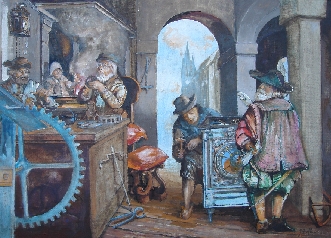 A Horologerie, 2006, Oil paint on canvas
A Horologerie, 2006, Oil paint on canvas Abstract River, 2005
Abstract River, 2005 Running fox, Běží liška k Táboru
Running fox, Běží liška k Táboru Dog jumped over oats, Skákal pes přes oves
Dog jumped over oats, Skákal pes přes oves It rains song, Prší prší
It rains song, Prší prší Halibeli, Halí, belí
Halibeli, Halí, belí Picture6 from cellphone, 2016
Picture6 from cellphone, 2016 Picture35 from cellphone, 2016
Picture35 from cellphone, 2016 Film reel, Jan s cívkou filmu, 2012
Film reel, Jan s cívkou filmu, 2012 Film slides, Filmové obrazy
Film slides, Filmové obrazy Blansko Medal, Medaile za animace
Blansko Medal, Medaile za animace Guitarplayer, Jan Kafka na kytaru, 2012
Guitarplayer, Jan Kafka na kytaru, 2012 Guitarist, Kytarista Jan, 2016
Guitarist, Kytarista Jan, 2016 Shipmodel, Papírový model
Shipmodel, Papírový model Ships-modeller, Modelář lodí, 2012
Ships-modeller, Modelář lodí, 2012 Sitting Jan and floor, Jan sedící
Sitting Jan and floor, Jan sedící Floordecor, Dekorace podlahy
Floordecor, Dekorace podlahy Eft decor, Salamander, 2016
Eft decor, Salamander, 2016 Dragon, Šamotový drak
Dragon, Šamotový drak Jan Kafka, Spešov, 2005
Jan Kafka, Spešov, 2005 Jan Kafka in studio, 2005
Jan Kafka in studio, 2005 Honza, 2005
Honza, 2005Heran, Courtesy of Walter Novak, 2009
Heran, Courtesy of Walter Novak, 2009
 Youth, goodbye in Bílovice, Courtesy of Petr Ševčík
Youth, goodbye in Bílovice, Courtesy of Petr Ševčík Ambulance man Heran, kreslil Petr Ševčík
Ambulance man Heran, kreslil Petr Ševčík Author: Fisher
Author: Fisher Author: Táborský
Author: Táborský Meadow flower, Luční květina, 1992
Meadow flower, Luční květina, 1992 Brno, cca 1960s, Unsigned
Brno, cca 1960s, Unsigned a Dance ball
a Dance ball Three musketeers
Three musketeers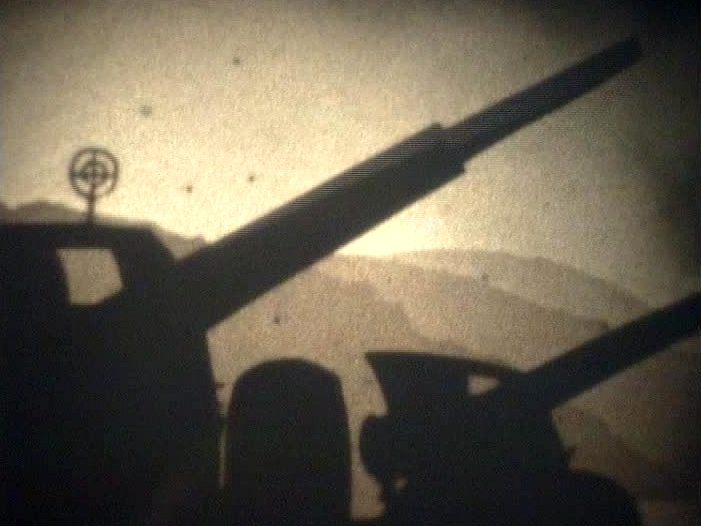 On hunt, Na lovu
On hunt, Na lovu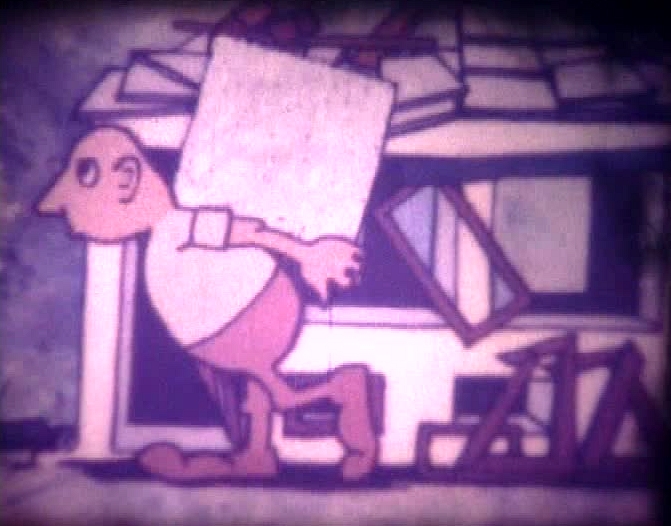 Cottage, Domeček
Cottage, Domeček No further!, Dál ne!
No further!, Dál ne!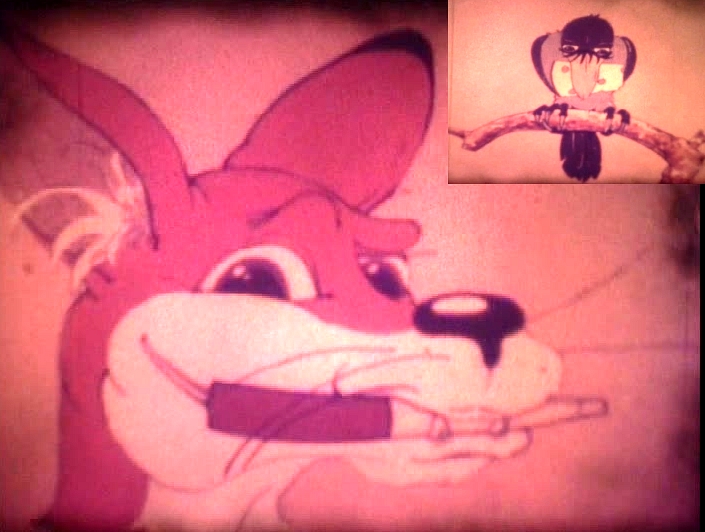 The Fox and raven, Liška, vrána a sýr
The Fox and raven, Liška, vrána a sýr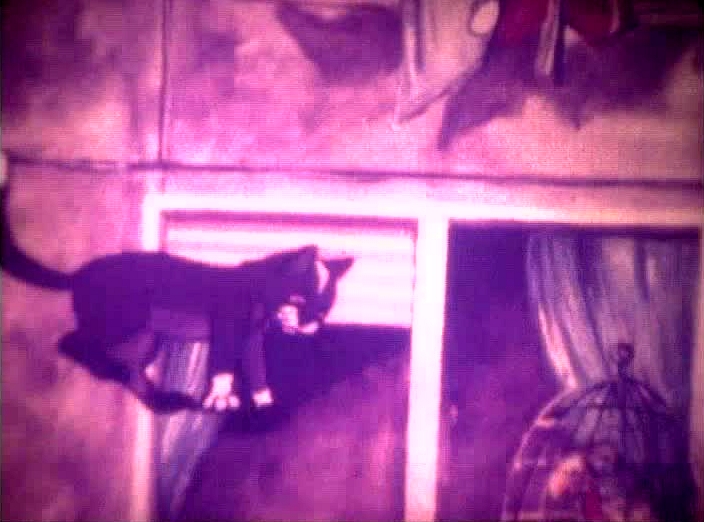 Cat crawls by hole, Kočka leze dírou
Cat crawls by hole, Kočka leze dírou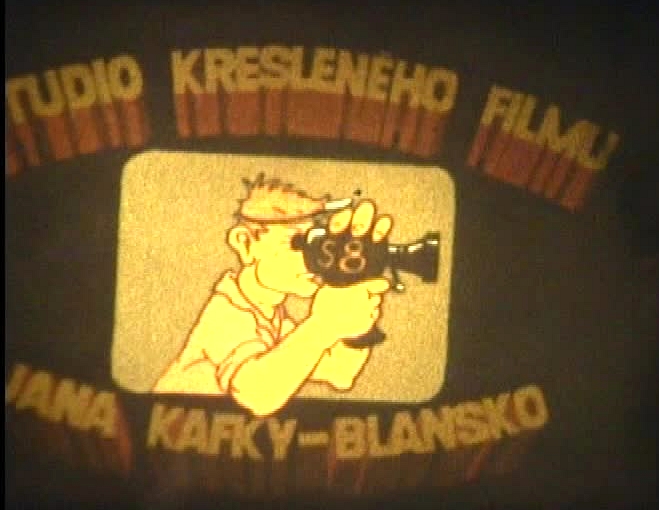 Animated logo Studio Kresleného Filmu Jana Kafky - Blansko
Animated logo Studio Kresleného Filmu Jana Kafky - Blansko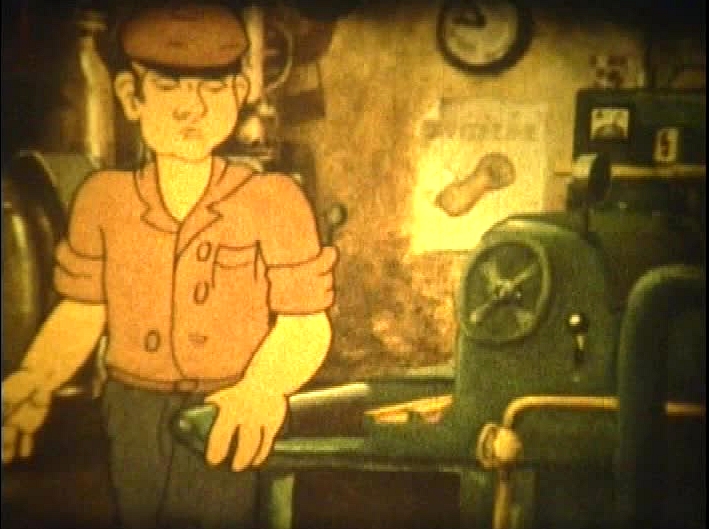 New Age, Nová doba
New Age, Nová doba A little bee, Včelka
A little bee, Včelka Diskobolos
Diskobolos
